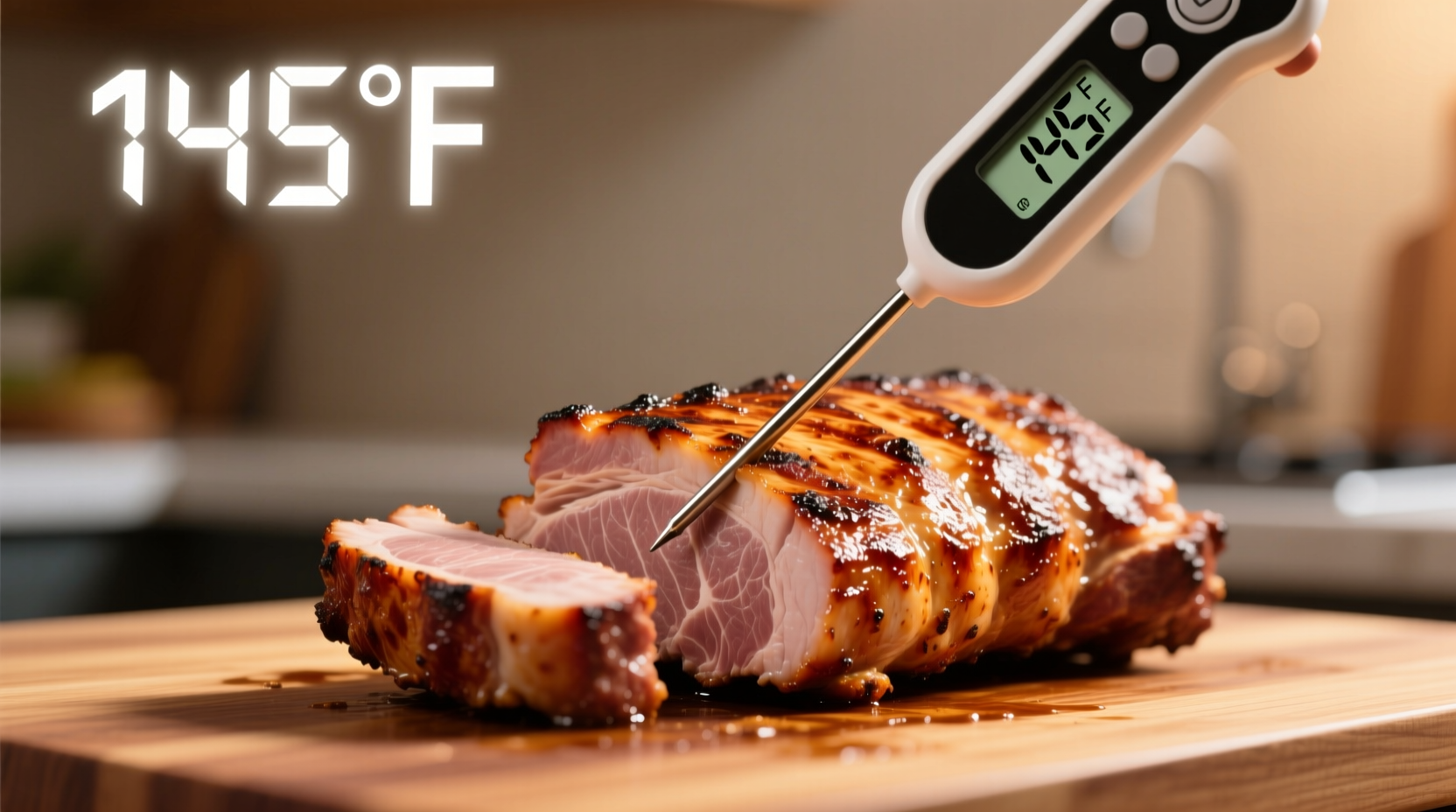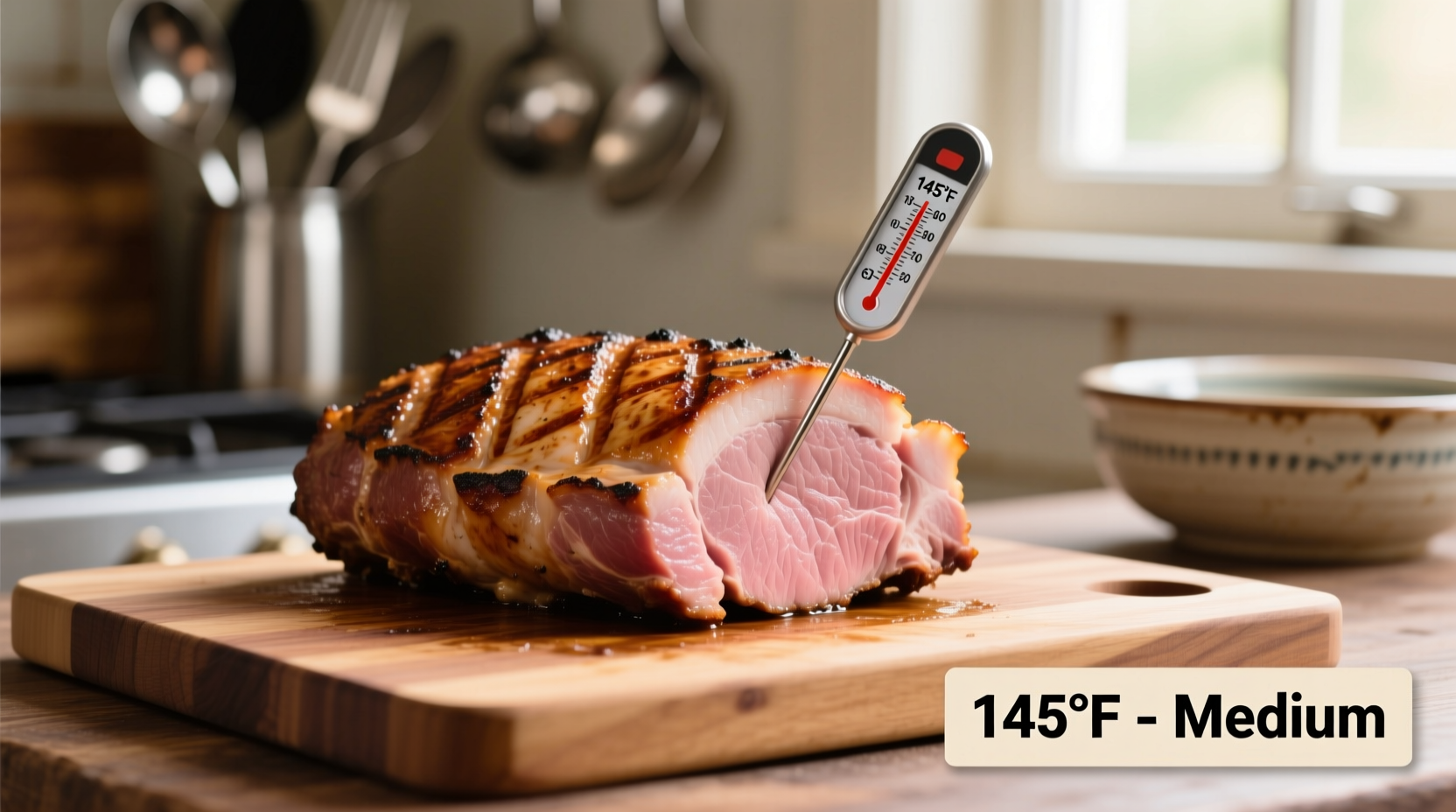For home cooks aiming for restaurant-quality pork loin, understanding the perfect cooking temperature isn't just about food safety—it's the key to transforming an expensive cut into a succulent centerpiece for your meal. Get it right, and you'll enjoy tender, flavorful pork with a hint of pink; miss the mark, and you risk dry, tough meat that wastes both your time and investment.
The Evolution of Pork Cooking Temperatures
Understanding why 145°F has become the gold standard requires looking at how pork safety guidelines have evolved. In 2011, the USDA lowered the recommended cooking temperature for whole-muscle pork from 160°F to 145°F—a significant shift based on improved farming practices and better understanding of trichinosis risks.
| Year | Recommended Temperature | Rest Period | Key Scientific Understanding |
|---|---|---|---|
| Pre-2011 | 160°F (71°C) | None | Trichinella parasite concerns |
| 2011-Present | 145°F (63°C) | 3 minutes | Modern farming reduced parasite risks; precise heat treatment kills pathogens |
This timeline reflects improved food safety standards and better scientific understanding of pathogen elimination. The change wasn't arbitrary—it came after extensive research by the USDA's Food Safety and Inspection Service confirming that 145°F with a 3-minute rest effectively destroys any potential pathogens while preserving optimal texture.
Why 145°F Is the Perfect Sweet Spot
Pork loin's delicate muscle structure responds dramatically to temperature changes. At 140°F, the meat begins to lose moisture rapidly as proteins tighten. By 150°F, significant moisture loss occurs, resulting in dry, stringy texture.
The science behind this precision involves protein denaturation. Pork loin contains myosin (which coagulates at 122-140°F) and actin (which coagulates at 140-176°F). Cooking to 145°F allows myosin to firm up while keeping actin from becoming too tight, preserving juiciness. The subsequent 3-minute rest period allows carryover cooking to reach the final safe temperature while redistributing juices.
Essential Tools for Temperature Accuracy
Don't rely on guesswork or cooking times alone—your thermometer is your most critical tool:
- Digital instant-read thermometer: Provides accurate readings in 3-4 seconds
- Leave-in probe thermometer: Ideal for oven roasting, allowing continuous monitoring
- Calibration check: Test in ice water (should read 32°F) or boiling water (212°F at sea level)
Insert the thermometer into the thickest part of the loin, avoiding bone or fat pockets. For best results, take multiple readings from different areas as pork loin often cooks unevenly.

Step-by-Step Cooking Process
Follow this temperature-focused method for perfect pork loin every time:
- Remove pork from refrigerator 30 minutes before cooking to reduce temperature gradient
- Preheat oven to 375°F (190°C) for consistent heat application
- Season and sear pork on all sides (2-3 minutes per side) to develop flavor
- Transfer to oven and cook until internal temperature reaches 140°F
- Remove from oven and let rest 3-5 minutes—the temperature will rise to 145°F during this time
- Verify final temperature has reached 145°F before slicing
Avoiding Common Temperature Mistakes
Even experienced cooks make these temperature-related errors:
- Mistake: Relying on color alone—pork can be safely cooked at 145°F and still appear slightly pink
- Mistake: Not accounting for carryover cooking—pulling pork at 145°F guarantees overcooking
- Mistake: Opening the oven too frequently—each opening can drop temperature by 25-50°F
- Mistake: Slicing immediately after cooking—causes precious juices to escape
Professional chefs universally agree that the single biggest factor in pork loin success is precise temperature control. As Antonio Rodriguez explains from his Michelin-starred kitchen experience: "The difference between 140°F and 150°F is the difference between succulent and sawdust. Your thermometer isn't optional equipment—it's your most important cooking tool."
Special Considerations for Different Cooking Methods
While the target internal temperature remains constant, cooking methods affect your approach:
- Grilling: Use two-zone cooking; move to indirect heat when internal temperature reaches 130°F
- Sous vide: Cook at 140°F for 2-4 hours, then sear to reach final 145°F temperature
- Slow roasting: Cook at 275°F until internal temperature reaches 140°F, then finish at higher heat
- Stuffed pork loin: Target 145°F for the pork, but ensure stuffing reaches 165°F if it contains meat or eggs
Remember that thicker cuts require more resting time—add 1 minute of rest for every inch of thickness beyond 2 inches. This adjustment accounts for greater heat retention in larger pieces.
What If You Don't Have a Thermometer?
While we strongly recommend using a thermometer, these visual and tactile cues can serve as backup indicators:
- Texture: Properly cooked pork should feel firm but yield slightly when pressed
- Juices: Clear or faintly pink juices (not red) indicate proper cooking
- Resistance: When pierced with a knife, it should offer moderate resistance
However, these methods are significantly less reliable than temperature measurement. Food safety experts at the USDA consistently emphasize that visual cues alone cannot guarantee pork has reached a safe internal temperature.
Food Safety Context and Limitations
While 145°F is the standard recommendation, certain situations require higher temperatures:
- For immunocompromised individuals, some food safety experts recommend 150°F
- Pork loin injected with marinades requires cooking to 150°F due to potential pathogen transfer
- When using older freezers with inconsistent temperatures, add 5°F to your target
These context-boundary considerations highlight why understanding the principles behind temperature guidelines matters more than memorizing a single number. The FDA Food Code confirms that 145°F with 3-minute rest achieves a 6.5-log reduction of potential pathogens, making it microbiologically safe for consumption.











 浙公网安备
33010002000092号
浙公网安备
33010002000092号 浙B2-20120091-4
浙B2-20120091-4